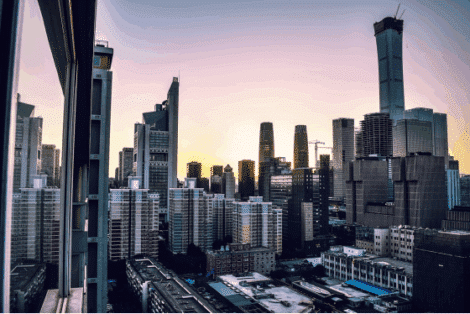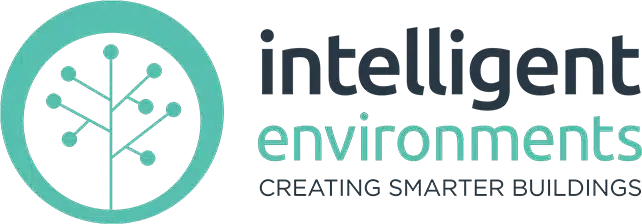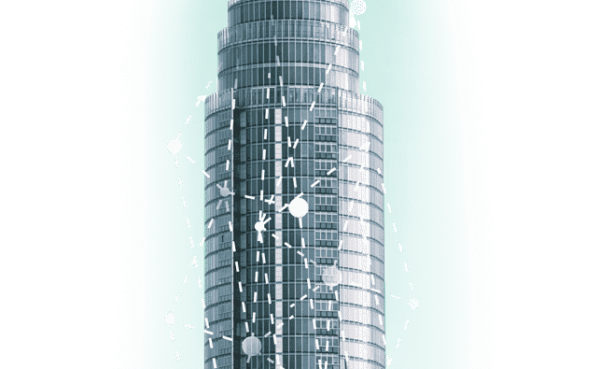In the world of commercial construction, lighting control is far more than an afterthought. It’s the backbone of a building’s usability, efficiency, and long-term adaptability.
Whether for an office, retail centre, hotel, or healthcare facility, lighting control plays a crucial role in balancing comfort, energy performance, and sustainability.

Commercial buildings encompass a broad spectrum – from corporate offices and retail outlets to warehouses, hotels, and even multi-use developments combining residential and commercial spaces. Regardless of type, every commercial building must deliver safe, efficient, and comfortable environments that adapt to evolving tenant demands and operational needs.
Understanding the Base Build
In construction, the Base Build refers to the essential framework provided by the developer – the structural shell, façade, and primary mechanical and electrical systems such as HVAC, water, and power distribution. Once tenants occupy the space, customisation begins through tenancy fit-outs, where lighting control is tailored to meet specific operational or brand requirements.
Lighting control in shared or base-build areas – car parks, lobbies, stairwells, fire exits, and corridors – is critical. Unfortunately, cost-driven decision-making often leads to selecting low-cost systems that meet minimum compliance but fail to deliver long-term performance.
While these “budget-friendly” systems may function initially, they often result in high maintenance costs, poor flexibility, and reduced lifespan. When you factor in failure rates and replacement cycles, cheap systems usually become the most expensive option over time.
The Pitfalls of Cost-Only Decisions
Choosing lighting control purely on cost can jeopardise quality, flexibility, and future adaptability. Cheap systems typically lack robust warranties, manufacturer support, or interoperability with future upgrades.
Worse still, during the build phase, even well-specified systems can be substituted for inferior alternatives to save on upfront costs. These substitutions may appear minor but can lead to long-term complications for owners, facility managers, and tenants.
A more sustainable approach is to specify and commission systems designed for longevity – ones that can evolve alongside the building and its occupants.
Building for Sustainability
Sustainability now sits at the core of commercial design. Developers and engineers are under pressure to reduce waste, optimise energy consumption, and build adaptable systems that minimise future retrofit costs.
Lighting control plays a key role in this. Systems that allow real-time monitoring, automatic testing, and granular reporting can significantly reduce a building’s energy use and carbon footprint.
Selecting a scalable, standards-based system from the outset not only aligns with green building goals but ensures compliance with frameworks like NABERSNZ and Green Star.
zencontrol DALI-2: Low-Cost Today, Scalable Tomorrow
The zencontrol DALI-2 lighting control standard represents a best-of-both-worlds approach – compliant, affordable, and expandable. zencontrol DALI-2 provides the basic functionality needed for a base build while supporting seamless upgrades to advanced features as a building’s needs grow.
Because zencontrol DALI-2 enables two-way communication between devices – lights, sensors, and switches – it can report energy use, lamp performance, and system health. This diagnostic feedback empowers facility managers to make smarter, data-driven maintenance and procurement decisions.
Furthermore, zencontrol DALI-2 integrates both standard and emergency lighting systems, automating testing and reporting to ensure safety compliance while reducing maintenance costs. With open-protocol certification, zencontrol DALI-2 guarantees interoperability across multiple vendors – a vital safeguard against vendor lock-in and system obsolescence.
The result? A lighting control infrastructure that’s cost-effective at the outset yet ready to support smart, connected, and sustainable buildings for years to come.
Lighting Control for Tenancy Fit-outs
Once the base build is complete, the focus shifts to tenancy fit-outs – where spaces are personalised to reflect tenant needs, operations, and brand identity.
This phase is about creating environments that are flexible, efficient, and comfortable. Lighting plays a key role here, directly affecting employee productivity, customer experience, and energy performance.
If the base build system has been wisely specified, integrating tenancy fit-outs becomes straightforward – allowing tenants to easily extend the system for their specific needs without costly rewiring or replacement.
Key Considerations for Tenancy Lighting Control
- Customisable Design
Different tenants have different needs. Offices require balanced, task-oriented lighting, while retail stores may use dynamic lighting for product display. A flexible system allows zoned, dimmable, or tuneable lighting configurations to suit various applications. - Energy Efficiency
Automated controls – such as occupancy sensors, daylight harvesting, and timed scheduling – ensure lights operate only when needed. This not only reduces operational costs but helps tenants achieve sustainability goals. - Smart Integration
Modern lighting systems should integrate seamlessly with Building Management Systems (BMS), connecting lighting with HVAC, security, and audio-visual systems for unified control and performance optimisation. - Scalability
Tenants evolve – their spaces, layouts, and energy requirements change. A scalable lighting system allows for reconfiguration and expansion without redesigning the infrastructure.
zencontrol DALI-2 and DALI+: Smart Solutions for Fit-outs
For tenancy fit-outs, zencontrol DALI-2 (wired) and DALI+ (wireless) provide powerful, future-proof solutions. Built on the global DALI standard, these systems offer flexibility, interoperability, and data-driven insights.
Key advantages include:
- Zoning Flexibility: Independent control of lighting zones for tailored environments.
- Energy Savings: Real-time occupancy and daylight-based control.
- Scalability: Effortless expansion as business needs grow.
- Data Insights: Detailed reporting for performance and energy tracking.
- Emergency Integration: Automatic compliance testing and fault reporting.
With intuitive wall-mounted panels, mobile apps, or dashboards, tenants can adjust lighting scenes, schedules, and energy profiles on demand – even remotely.
Supporting Productivity and Wellbeing
Beyond efficiency, lighting directly impacts human experience. Well-designed lighting control reduces eye strain, supports circadian rhythms, and creates inviting environments that boost comfort and productivity.
Systems offering tuneable white light can simulate natural daylight cycles, helping occupants stay alert during the day and relaxed toward evening – a subtle but powerful way to enhance wellbeing in the workplace.
Why Choose zencontrol
When it comes to lighting control in commercial buildings, zencontrol stands out as a next-generation system built entirely on the zencontrol DALI-2 standard.
It’s a platform designed for both base build and tenancy fit-outs, offering flexibility, scalability, and smart integration that meet the real-world demands of today’s commercial environments.
What sets zencontrol apart:
- True Two-Way Communication: Real-time feedback from every connected device.
- Flexible Integration: Seamless connection with major BMS platforms via BACnet and MQTT.
- Cloud and Onsite Management: Secure access, control, and analytics across one or multiple sites.
- Wired and Wireless Freedom: Supports both zencontrol DALI-2 and Thread-based wireless networks for easy upgrades.
- Rapid Commissioning: Automated setup and intuitive configuration, reducing commissioning time by up to 100x.
Smart Features That Deliver Results
| Feature | Benefit |
| Occupancy & Daylight Sensors | Cuts energy use by activating lights only when required |
| Emergency Lighting Integration | Automated testing and compliance reporting |
| Circadian Lighting Profiles | Enhances occupant wellbeing and productivity |
| Analytics & Reporting | Real-time insight into energy and system performance |
| Rapid Commissioning | Faster, error-free project delivery |
Sustainability and Long-Term Value
zencontrol supports sustainable design and operational efficiency. Energy and usage data generated by the system can contribute to NABERSNZ and Green Star certifications, while backwards compatibility with legacy DALI infrastructure reduces waste and retrofit costs.
With zencontrol, developers and tenants can invest confidently – knowing their lighting control system is not only compliant and reliable today, but capable of meeting the evolving needs of tomorrow’s smart buildings.
Building for the Future
Lighting control in commercial buildings should never be an afterthought or a line-item saving. It’s an investment in the building’s long-term value, operational efficiency, and sustainability.
By adopting scalable, standards-based systems like zencontrol DALI-2, DALI+, and zencontrol, developers and engineers can deliver buildings that meet today’s needs – and tomorrow’s opportunities.
If you’re planning a new commercial project or reviewing your lighting control strategy, talk to Intelligent Environments for a consultation. We’ll help you design a system that fits your budget, aligns with sustainability goals, and provides a framework that’s truly future-ready.


